Automatic gearboxes make driving more comfortable, but they’ve also served as a showcase of mechanical prowess. An average automatic in modern cars looks like something out of a spaceship. CVT transmission takes the cake when it comes to odd-looking gearboxes, though. The real question is, are CVT or Continuously Variable Transmissions worth the hype?
MINI is one of the brands that’s been using these black magic devices in their cars. Today, our goal is to briefly go over the basics of CVTs and discuss the common issues and maintenance related to MINI’s CVT gearbox.
How Does CVT Transmission Work?
CVTs are nothing like your regular transmission boxes. A traditional automatic uses a set of gears and clutches to change gearing. When you pop open a CVT box, you won’t find any conventional gears. Instead, you’ll find two pulleys and a steel belt that runs between them.
What makes this gearbox so interesting is the fact that you’re getting a virtually infinite combination of gear ratios. Instead of having separate gears engage one after another, there are two pulleys that can change their diameter as necessary.
Altering the width of a pulley is done by pushing or pulling the two sheaves apart. You’ll find this effect happening on both the input and output pulley since the belt’s length has to remain the same. When the sheaves are close together, the pulley acts as a large gear. Once they are pushed apart, the pulley acts as a smaller gear.
Constantly changing the pulley’s geometry produces a continuously variable gear ratio, hence the name of the gearbox.

Anatomy of a Steel Belt
The steel belt used in this type of automatic transmission is a work of art. It’s made of steel, which is partially why a CVT automatic gearbox still looks like alien tech even in 2020. That being said, this technology is far from new.
We’ve seen the first commercial CVT gearbox made a way back in 1958 by Van Dooren Transmissie B.V – a Dutch company that pretty much invented the CVT technology, including the steel belt.
Speaking of which, the belt works by using a large number of vertical steel plates stacked over a longitudinal high tensile steel band. The plates are stacked close together, allowing them to provide sufficient grip on the pulleys, all while remaining completely flexible.
Are There Any Benefits of CVT Transmission Over Regular Automatics?
Despite how incredibly complex CVT technology appears, your average CVT gearbox is actually far less complicated than a standard automatic gearbox. We can go a step further and say that it’s cheaper and easier to make a CVT than a traditional automatic transmission.
CVTs are also more fuel-efficient on average since you’ve got a virtually endless number of gear combos to choose from. In other words, you can always keep the engine in an RPM band where it is most efficient and delivers the most power.
All this being said, CVT gearboxes have their downsides as well. For one, you won’t find a CVT in high power, performance vehicle. These transmissions are considered to be the eco-friendly alternative to standard automatics.
Then there’s the maintenance issue. As it turns out, a standard CVT requires far more maintenance than its counterparts. Granted, we’re not talking about anything outrageous as you’re about to see later in this guide, but it’s enough to make some people wary of CVTs.
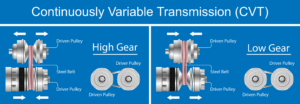
MINI CVT Transmissions
The story of MINI/BMW and their use of CVTs in early models of Cooper is anything but a bright spot on BMW’s jacket. Namely, the gearboxes installed between 2001 and 2008 were defective out of the factory, which even resulted in a class-action lawsuit.
BMW bought MINI back in 1996 to tap into the hot hatch market all over the world. They’ve had the perfect opportunity, too. The original MINI Cooper, mainly the Mk1 and Mk2, were and still are legendary vehicles. Their influence spanned way past the realm of the automotive world. MINI Cooper was a pop-culture symbol.
The brass at BMW knew that revamping the Cooper could potentially bring a lot of good to BMW. All they had to do was not mess it up.
What happened next is a bit murky. BMW had hyped the new Cooper so much that they’ve had the eyes of the whole industry looking their way. Coincidentally, BMW was also behind schedule. Instead of bumping the release date for the vehicle, they’ve started cutting corners.
Unfortunately, the CVT gearbox used in those older models was heavily affected by this decision. For a company that makes great engines and is known for delivering reliable power to the wheels, BMW made what appears to be rookie mistakes.

Premature Wear and Failure Issues
The R50 gearbox BMW has paired with choices of engines for MINI was iffy out of the gate. That wouldn’t be such a big deal considering that CVT was never meant to be a racing gearbox. But, they were unreliable as well.
The reason why they were unreliable has very little to do with the build quality of the transmission itself. Rather, it has to do with the fact that MINI has completely missed the mark when it comes to prescribed service intervals.
Many owners followed what the manual says, only to find themselves with broken CVTs after as little as 20,000 miles. Such a gross miscalculation on maintenance intervals has resulted in a class-action lawsuit that has extended the warranty for CVTs to 8 years or 150,000 miles, whichever comes first.
Proper Maintenance
The key to maintaining an R50 box, even in 2020, is in changing the fluid every 30,000 miles. You can either use a fluid change kit or have the dealership perform the service. Then, you have to take the car to a dealership for a complete CVT reset. They need to reset all the transmission adaptions and push the gearbox through a relearn cycle.
Both of these steps are imperative if you want to avoid most of the drivability issues often associated with an R50 CVT. Speaking of issues, here are just some of the symptoms you might face due to improper maintenance.
Known Symptoms
An improperly maintained CVT gearbox, or a faulty one, will show erratic shifting signs as the most common symptom. Then there’s the failure to slip into drive, leaving you stranded wherever you are at that moment. Some drivers even report their vehicles losing power and slipping into limp mode when trying to select D on the shifter.
An excellent way to keep these at bay, aside from proper maintenance, is to drive the car in Sport Mode at least two times a month. In this mode, running it forces the gearbox to change functions, thus preventing the adaptation loss that often causes most of the symptoms listed above.
Use Only Quality MINI Parts
We offer one of the largest catalogs of Genuine, OEM, and aftermarket MINI parts in the United States. To find the part you’re looking for, simply head over to our online store and select your vehicle from the drop-down menu.
If you have any further questions about the parts in our offer, feel free to get in touch with our customer support service. You can reach us by filling out our contact form or by calling one of the numbers listed on eEuroparts.com. Our customer support reps are all car people just like you and offer any assistance you might need.


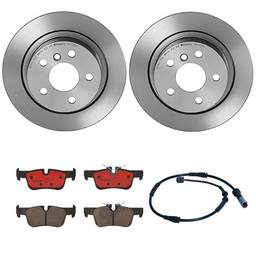
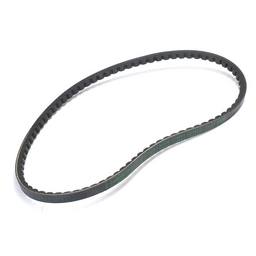
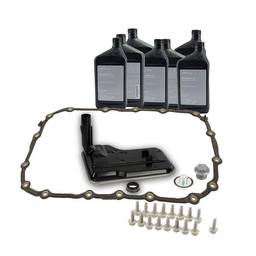
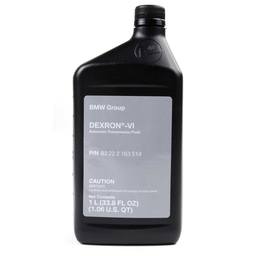


What if when you put it in drive and it automatically goes into sd mode. Is there something I can do myself?
So you’re saying the sport driving mode is engaged by default on your MINI? That’s interesting, has it always been that way for you? Also do you have an owners manual, perhaps there’s something in there that you can change from the cockpit without requiring any special tools. Let me know what you find, thanks.